Reindeer Antiques specialises in English antique furniture focusing on Georgian antique furniture. The frequently changing inventory of antique furniture ranges from William and Mary, Queen Anne pieces to Georgian antique furniture designed by the most famous cabinet makers. A highlight in the showcase is the sofa commissioned by the Duke of Leeds, who played a key role in English history. He was one of three peers who signed the letter asking William and Mary to accept the English throne.
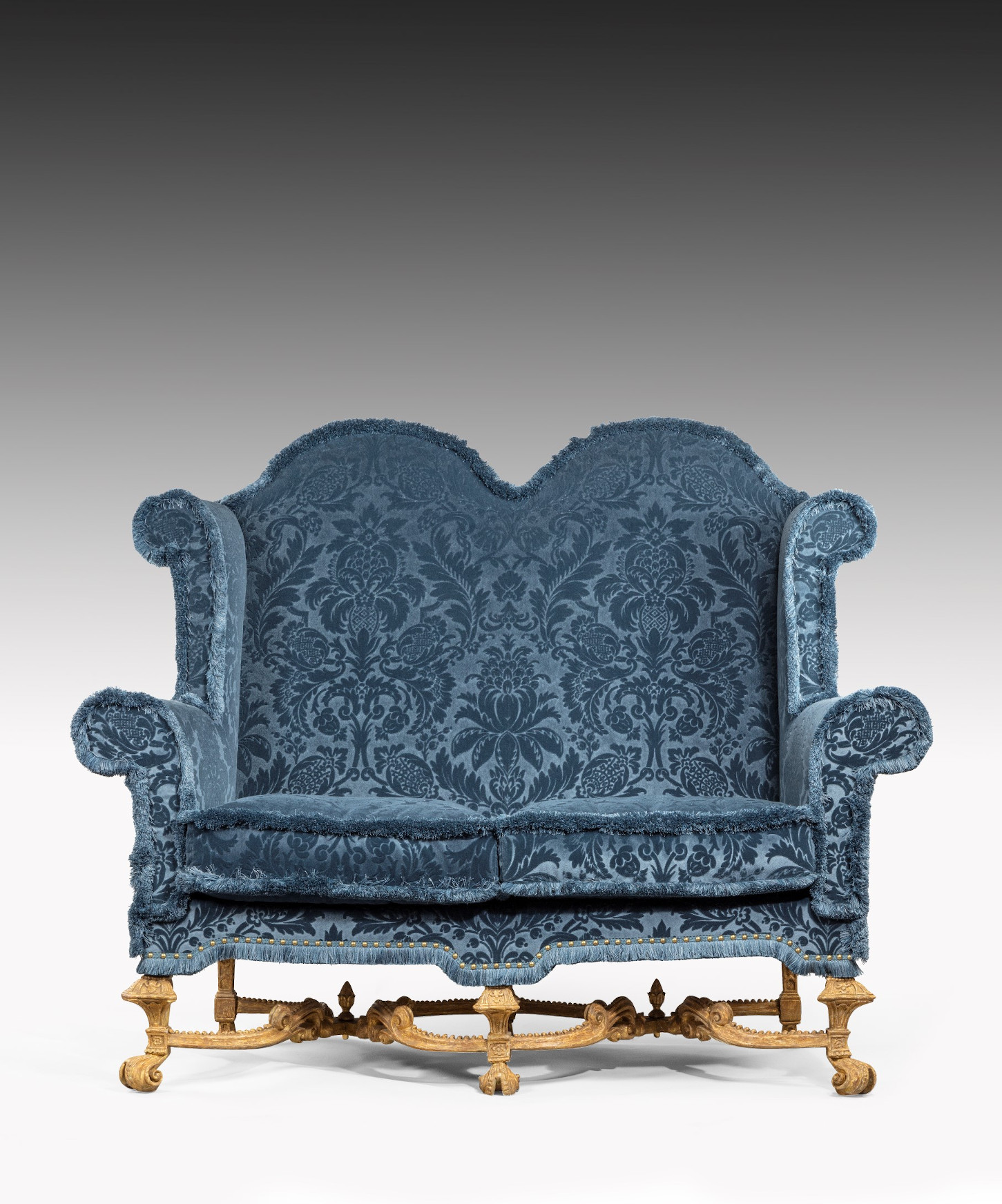
An exceptional William III Baroque carved giltwood settee
Commissioned by Sir Thomas Osborne, Bt., 1st Duke of Leeds (1632-1712) either for his house at Wimbledon, Surrey or for Kiveton Park, Yorkshire.
This giltwood settee is the key piece from a larger suite of furniture which is decorated with wonderful carved gilt gesso decoration in the Baroque taste and is clearly inspired by the designs of Daniel Marot (1661-1752).
The careers of Daniel Marot and Thomas Osborne were both inextricably intertwined with the ascendancy of William III to the English throne. Osborne was one of seven politicians involved in the Glorious Revolution who wrote to William of Orange inviting him to ascend the throne of England. For his support Osborne was rewarded with the Dukedom of Leeds in 1694 and the suite may have been commissioned to celebrate his elevation. Marot, a Huguenot emigré was instrumental in bringing the Baroque style to the Court of William of Orange. Marot is associated with the remodelling of the interiors of Het Loo Palace, Amsterdam and the redecoration of Hampton Court in the lavish Baroque style.
The settee is probably by the royal upholsterer Philip Guibert who is recorded as working in St. James's, London from 1692-1739. He is the only cabinet-maker or upholsterer who appears in the account books of the
Duke of Leeds and his work for the Royal Court (at Windsor and Kensington Palace) would have given him first hand knowledge of Marot's work.
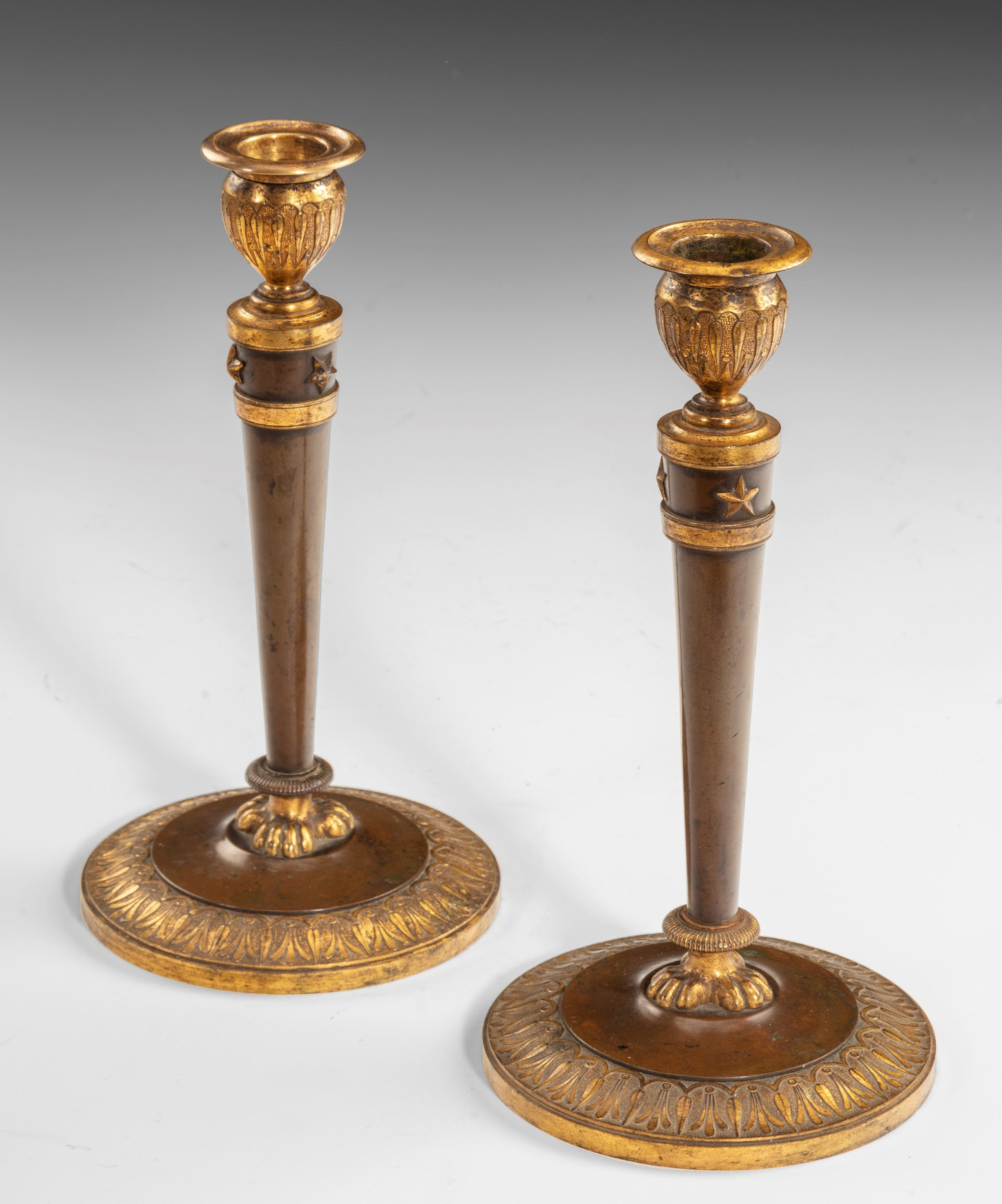
Pair of Empire bronze and ormolu candlesticks by Claude Gallé
A fine pair of Directoire period bronze and ormolu candlesticks attributed to Claude Gallé (1757-1815); the tapering bronze stem decorated with ormolu stars and terminating in lion paw feet sitting on a circular base decorated with a stylised foliage border. One sconce replaced. The son of a poultry farmer, Claude Gallé rose beyond his humble origin to become an important bronze caster and gilder at the end of the 18th century. He supplied many pieces of gilt-bronze including candlesticks, furniture mounts and clocks for the royal palaces of Fontainebleau, Versailles, Saint Cloud and Compiegne. This pair of candlesticks are identical to two identical pairs that Claude Galle supplied to the Palace of Fontainebleau between 1804 and 1805. Circa: 1805 Height: 9.75" (24.5cm) Diameter: 5" (12.5cm)
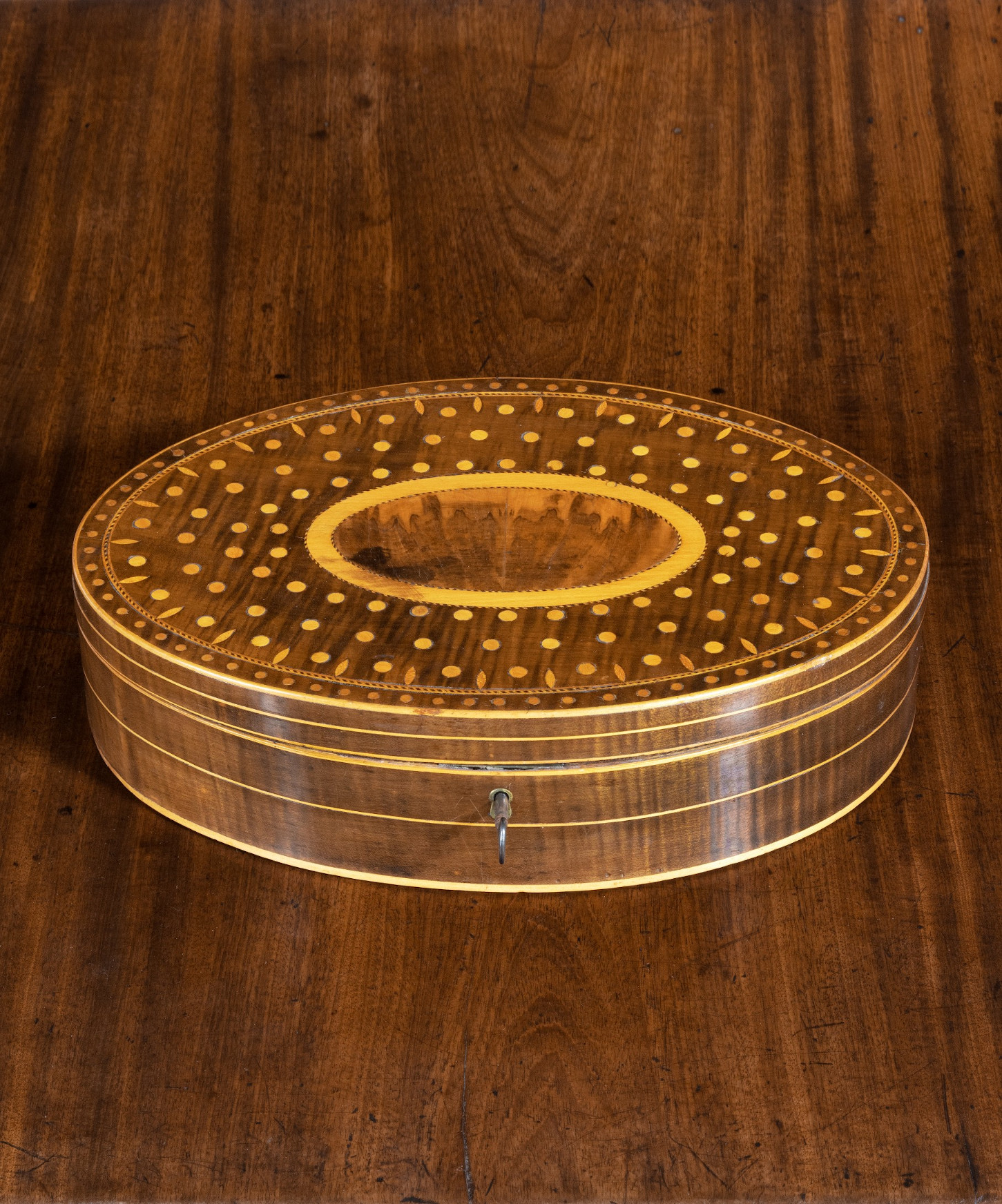
Georgian Sheraton period oval box in harewood
An exceptional George III Sheraton period oval box veneered in harewood; the top inlaid with a central oval of blackthorn edged with barber's pole stringing and surrounded by rings of inlaid boxwood circles. The original working lock opens to reveal a plain interior covered in sugar paper. This charming Georgian box is perfect for storing jewellery, watches or cuff links. Circa: 1790 Height: 3" (7.5cm) Width: 11.75" (30cm) Depth: 8" (20.25cm)
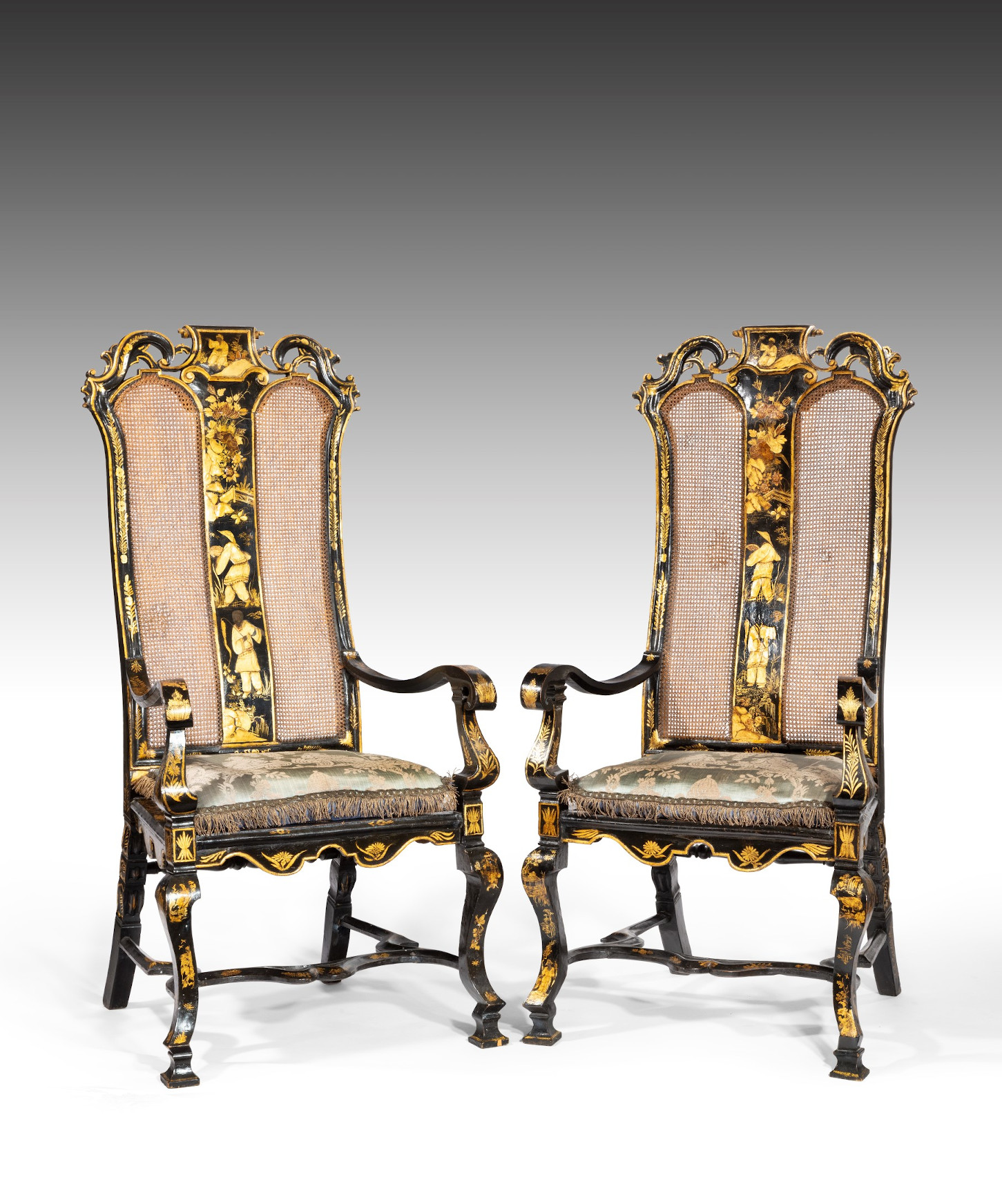
An exceptional pair of William III period japanned and lacquered armchairs
The armchairs' high back with a carved and pierced cresting rail above a lacquered central splat flanked by panels of caning; having elegantly curved arms above a caned seat and raised on cabriole legs to the front which terminate in unusual square block feet and swept legs to the rear united by a shaped H-stretcher. Decorated throughout in black and gilt japanning and with a squab cushion covered in silk damask.
The japanned decoration on the armchairs is clearly influenced by Stalker and Parker's 'A Treatise of Japaning and Varnishing' (1688) and includes a broad variety of insects, flowers and Oriental figures. The armchairs are of wonderfully sculptural form and this can be particularly be seen in their profile and their high backs give the armchairs a great presence.
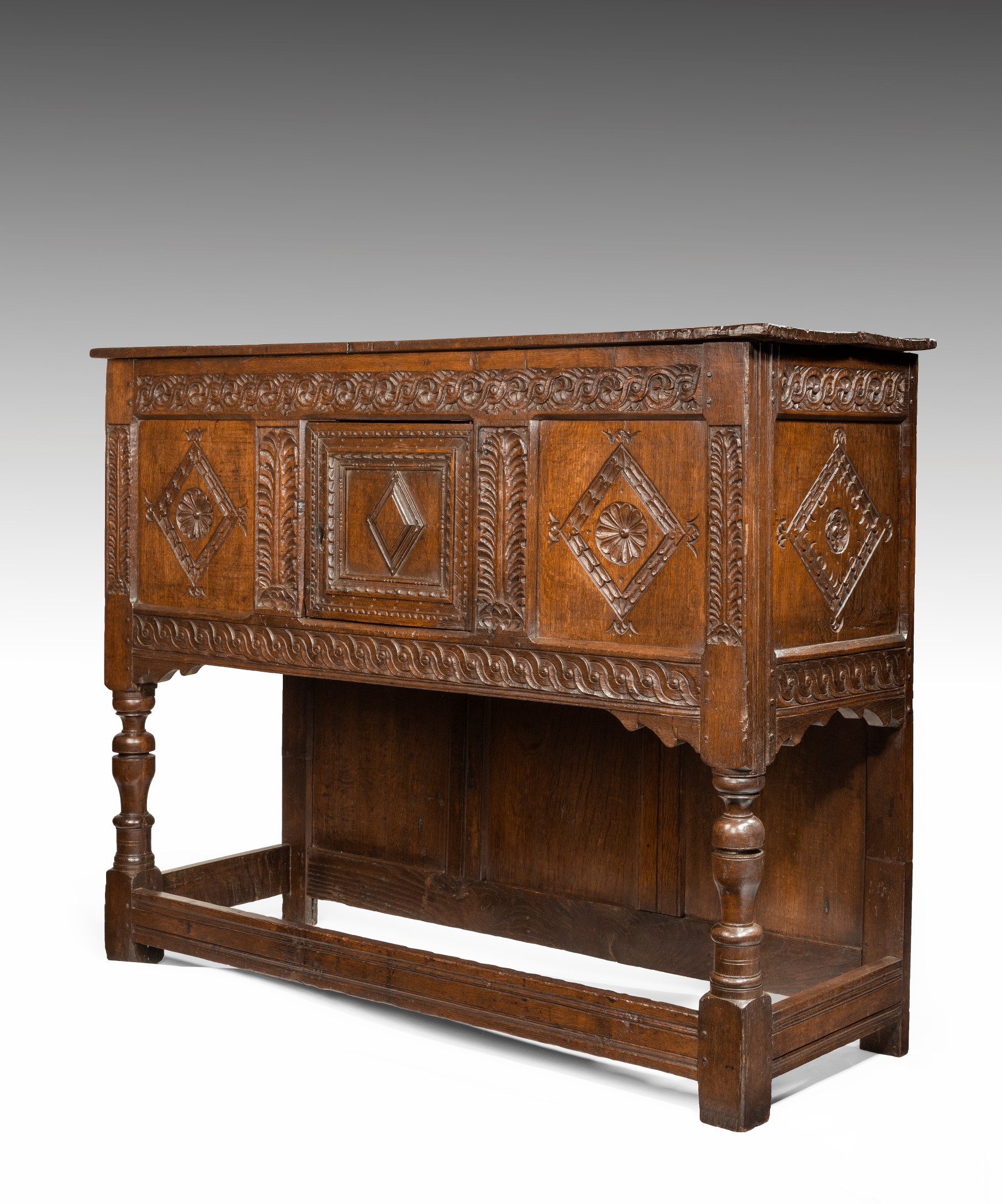
A handsome Seventeenth Century Charles II oak livery cupboard
With wonderfully bold carving; the cupboard's boarded top above a three panelled front with a central door and raised on cup and cover turned legs united by moulded stretchers. The livery cupboard is boldly carved with two different types of guilloche mouldings, palmettes, quatrefoils and lozenges and survives in remarkably untouched condition.
Circa 1680
Height: 46.75” Depth: 20” Width: 56.75”
